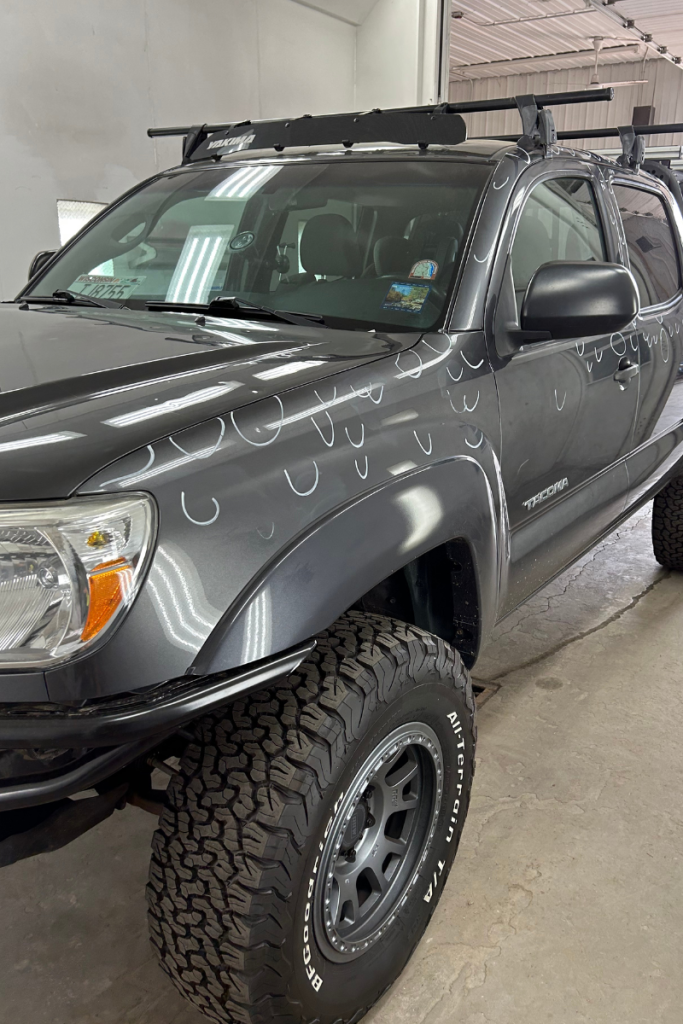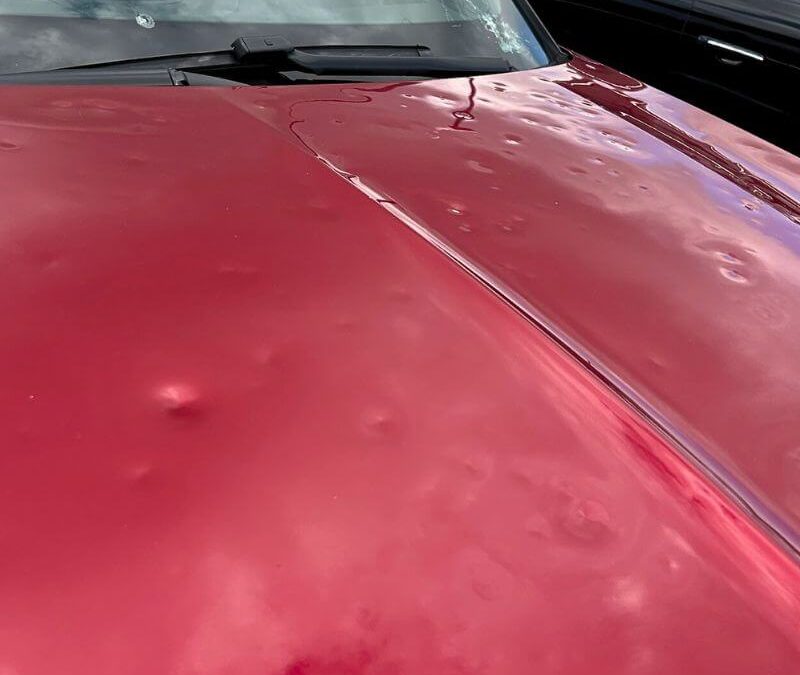A hailstorm rolls through, and when it clears, you find your car covered in dents. The shock hits hard, but what’s worse is realizing you don’t have comprehensive insurance for hail damage, meaning every costly repair will come straight out of your pocket.
Many people mistakenly assume their standard policy covers everything, but hail damage insurance coverage is crucial for these unpredictable events.
Comprehensive insurance isn’t just for accidents—it also protects you from non-collision car damage, like storms, theft, and even falling tree branches. Without it, those repair costs can add up fast, leaving you regretting that skipped coverage.
Don’t risk it—get the protection your car needs before the next storm hits!
What Is Comprehensive Insurance?
Comprehensive insurance is a type of auto coverage that protects you from non-collision damage to your car. This includes things like:
- Theft
- Vandalism
- Natural disasters (floods, storms, hail, etc.)
- Fire
- And of course, hail damage
Unlike collision insurance, which only kicks in when your car is damaged in an accident, comprehensive insurance covers those unexpected events that can still leave your car in need of repairs. Whether it’s hail, a falling tree branch, or even a wayward deer, comprehensive insurance has your back.
Why It’s Called “Comprehensive”
It’s called comprehensive because it covers so many different types of incidents, making it a broad, all-encompassing type of insurance—hence the name.
Why Hail Damage Coverage Is Essential
Hailstorms are unpredictable, and even if you live in a region that doesn’t experience them frequently, one sudden storm could cause significant damage to your car. Here’s why having coverage for hail damage is essential:
1. Unpredictable Weather Patterns
Hailstorms can strike out of nowhere, often with very little warning. With climate change increasing the unpredictability of weather patterns, areas that didn’t typically see hail are now at risk. In 2020 alone, the U.S. experienced over 4,000 major hailstorms, causing billions of dollars in damage.
2. Cost of Hail Damage Repairs
The average cost to repair hail damage can range from a few hundred to several thousand dollars, depending on the severity. Without comprehensive insurance, this is money that would come straight out of your pocket.
Here’s a breakdown of typical hail damage repair costs:
- Minor damage (small dents): $500 – $1,500
- Moderate damage (larger dents, multiple panels): $2,000 – $5,000
- Severe damage (extensive damage to the entire car): $5,000+
3. Financial Protection
Comprehensive insurance ensures that when your car is caught in a hailstorm, you won’t be left paying out of pocket for these costly repairs. You can rest easy knowing that your insurer will cover the bulk of the repair costs, minus your deductible.
How Comprehensive Insurance Works with Paintless Dent Repair (PDR)
One of the most effective and efficient methods for fixing hail damage is paintless dent repair (PDR). This specialized technique involves massaging dents out of your car’s bodywork without the need for paint or fillers, preserving your vehicle’s original finish.
So how does comprehensive insurance fit in with PDR?
1. Seamless Claims Process
With comprehensive insurance, filing a claim for hail damage is straightforward. After the hailstorm, you’ll:
- Document the damage (taking photos of your vehicle is a great start).
- Contact your insurance company to report the claim.
- Get an estimate from a PDR specialist or repair shop approved by your insurance company.
Most comprehensive insurance policies fully cover PDR as a repair method because it’s cost-effective and preserves the car’s value.
2. Quick and Easy Repairs
PDR is faster than traditional bodywork methods since it doesn’t require waiting for paint to dry or complex part replacements. Most hail damage repairs can be completed in just a few days, making the entire process smoother.
3. Maximizing Coverage
When you have comprehensive insurance, you want to ensure that you’re maximizing your coverage. Choosing PDR as your repair option is often the best route, as many insurance companies prefer it due to its cost-effectiveness and preservation of your car’s original look.

Common Misconceptions About Hail Damage and Insurance
Let’s address some of the common myths that can confuse car owners when it comes to hail damage and insurance:
1. Myth: Hail Damage Won’t Be Covered
Some people assume that hail damage is considered “cosmetic” and isn’t covered by insurance. This is false. Comprehensive insurance covers hail damage as long as you have it included in your policy.
2. Myth: Small Dents Don’t Need to Be Fixed
A small dent might not seem like a big deal, but even minor damage can weaken the protective finish on your car. Over time, these dents can lead to rust or further damage, costing you more in repairs. It’s always best to address hail damage as soon as possible—especially if you have comprehensive insurance to cover it.
3. Myth: Hail Damage Claims Will Raise Your Premiums
Many drivers worry that filing a hail damage claim will increase their insurance premiums. However, since hailstorms are classified as “acts of nature” and are beyond your control, these claims usually don’t result in higher premiums.
How to Choose the Right Comprehensive Insurance Policy
Not all comprehensive policies are created equal. Here are some key things to look for when shopping for the right coverage:
1. Coverage for Natural Disasters
Make sure your policy covers all forms of weather-related damage, including hail, floods, and storms. While most comprehensive policies include this, it’s always good to double-check.
2. Deductible Amount
Your deductible is the amount you’ll have to pay out of pocket before your insurance kicks in. If you live in an area prone to hailstorms, you may want to opt for a lower deductible to avoid paying a large amount when filing a claim.
3. Additional Coverage Options
Some insurance companies offer additional add-ons that can provide extra protection. For example, if you live in an area where hailstorms are common, you might want to add windshield protection or storm-specific coverage to your policy.
4. Customer Service and Claims Process
The last thing you want after a hailstorm is a complicated claims process. Look for an insurer with good customer service reviews and a history of handling claims quickly and fairly.

Real-Life Case Studies
Let’s take a look at two real-life examples to show how comprehensive insurance can make all the difference.
Case Study 1: The Driver with Comprehensive Insurance
- Situation: Jane was driving home from work when an unexpected hailstorm hit, leaving her car covered in dents.
- Action: Since she had comprehensive insurance, Jane quickly filed a claim and got her car repaired using PDR. Her deductible was just $500, and her insurance covered the rest.
- Outcome: Within a week, Jane’s car was back to its original condition without her paying out-of-pocket for expensive repairs.
Case Study 2: The Driver Without Comprehensive Insurance
- Situation: Tom, on the other hand, opted out of comprehensive insurance to save money on his premiums. When a similar hailstorm hit, his car sustained significant damage, and repairs were estimated at $4,000.
- Outcome: Tom had to pay the full repair costs himself, which turned out to be much more expensive than the money he saved by not having comprehensive insurance.
Comprehensive insurance is a crucial safety net for car owners, especially when it comes to unpredictable weather events like hailstorms. With the right coverage, you can avoid costly repairs and ensure that your vehicle is restored to its original condition using paintless dent repair (PDR).
Don’t leave your car—and your wallet—vulnerable to the unexpected. Review your insurance policy today, make sure you’re covered for hail damage, and experience clear and simple hail dent repair when you need it most.

